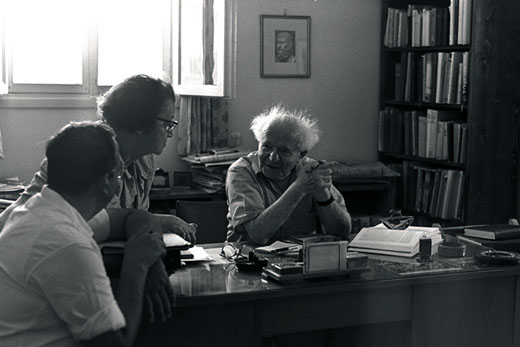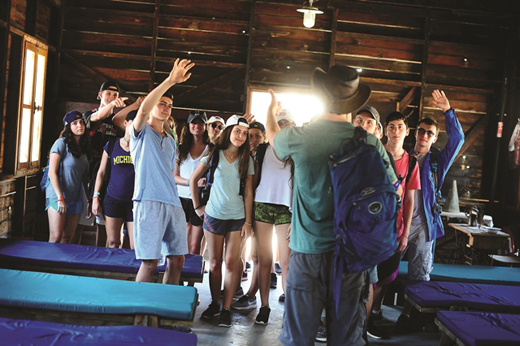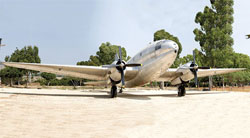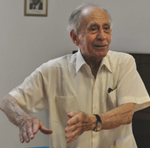Israel’s historical sites represent more than events from long ago—they tell the story of a nation and its people
By Rachel Cohen
Historical sites have the ability to stir emotions. Take the Statue of Liberty in New York, for example. Nearly every visitor—from anywhere around the world—can surely appreciate its significance, meaning, and symbolism for the U.S. as a whole. However, the connection is likely a global one, not a personal one.
In Israel, historical sites inspire dramatically different reactions. After all, in a nation of merely eight million people now celebrating 70 years of independence, each and every landmark carries a deep and powerful meaning for most.

Biblical sites aside, Israel’s connection to modern day landmarks can be traced back to its first prime minister, David Ben Gurion. Israelis and foreign tourists frequently flock to his home in Sde Boker, a kibbutz in the heart of the Negev Desert that is now a bustling museum, and learn about the bold statesman who envisioned a blooming desert, which has—rather miraculously—become a reality in recent years.
Thanks to its Blueprint Negev initiative, Jewish National Fund has transformed Southern Israel into the booming hub of culture, hi-tech, and education it is today. So while a pit stop in Sde Boker pays homage to the past, visiting its surroundings—specifically Be’er Sheva, the crowned jewel of JNF’s Blueprint Negev initiative and Israel’s fastest growing city—is a nod to the future Ben Gurion dreamt of decades ago.
To ensure that strong ties to Israel’s past are cultivated and maintained for generations to come, the Society for Preservation of Israel Heritage Sites (SPIHS), a Jewish National Fund partner, is tasked with preserving, restoring, and developing heritage sites across Israel.
For Noa Gefen, the organization’s executive vice-chairwoman, this is an undertaking that is both emotionally and professionally important to her. Gefen’s parents served in the Palmach, an elite fighting force which fought the British in the struggle for Israel’s independence, so any site commemorating the bravery and sacrifice of Israel’s soldiers speaks volumes to her.
“We’re not talking about historical sites from biblical times,” said Gefen. “These are historic sites from recent history that need to be shared with the younger generation. Many of these brave men and women are still among us.
“Once you start digging and asking questions, you find that each family has a story. Sometimes, it’s a hero of the IDF, the Palmach, or the Irgun. Sometimes it’s the people whose family helped build development towns and played a significant role in Israel’s creation as the Jewish homeland. No matter the connection, heritage sites tell the stories of our path to independence—the Jewish peoples’ independence in their own land.”
Historical sites are part of the Israel independence experience—a visceral and tangible reminder that a heavy price was paid for freedom in the not so distant past. Specific sites themselves throughout the country conjure up images of courage in the face of resistance and determination in the face of adversity.
It can be felt walking through the trenches of Ammunition Hill that overlook the ancient walls of Jerusalem’s Old City. Knowing it’s the same view shared by Israeli soldiers who captured the strategic hilltop from Jordanian forces 51 years ago, leading to the reunification of Jerusalem, makes it even more poignant.
While the view has stayed the same, today Ammunition Hill is a Jewish National Fund-sponsored national memorial site, providing visitors a robust interactive experience that transports them to the past, while honoring and recounting the story of the heroic soldiers who died in the fight to reunite the capital city during the 1967 Six-Day War.
Alon Wald, marketing manager and event coordinator at Ammunition Hill, credits Jewish National Fund for transforming the site from a bare bones venue commemorating the fallen into a museum that ties in the lessons learned from the battle with contemporary life.
The site now also boasts the new Jewish National Fund Norman and Jean Gould Commemoration Hall for visitors, an audio-visual theater, and the Wall of Honor—a wall that serves as a tribute to the heroism and courage of Jewish soldiers who served in uniform around the world and throughout time. Plaques can be purchased to honor any Jewish veteran.
Ammunition Hill hits close to home for Wald, whose father died during the battle for control of the hilltop. “My father literally paved the way onto Ammunition Hill. It is because of his sacrifice that his friends made history,” Wald said with a faraway smile.
The Ayalon Institute, another Jewish National Fund supported heritage site, is an important part of the narrative that gives testimony to what great lengths Jewish fighters went to for Israel’s independence and survival. It was at the Institute, while under British rule, that people clandestinely produced and stored bullets so they could prevail in the 1948 War of Independence. Between 1946-1948, they produced 2.5 million bullets in total secrecy, right under the noses of the British.
Understanding the importance of retaining such a crucial aspect of Israel’s history, Jewish National Fund has funded some major upgrades, including the installation of an elevator to provide easier public access to the interior of the site, and reconstructing the factory from the ground up.
“We want people to come and see what happened in the actual places,” said Gefen. “These sites are not regular museums. They are heritage sites. Our goal is to create opportunities for visitors to learn about Israel’s unique history in person, not just from textbooks in schools. We want them to tour the country and see history come alive with their own eyes.”

Another such place to experience pre-state Israel’s heritage up close and personal is the Atlit Detention Camp. Visitors can walk through the camp’s halls and see for themselves how European Jews, immediately following the Holocaust, fled in droves to the land of Israel as refugees, only to be incarcerated upon arrival for attempting to smuggle themselves into British-ruled Mandate Palestine. Visitors can also walk through the cramped conditions that held 13,000 people while they continued to hold onto their hopes of one day achieving the Zionist dream.


A new attraction recently opened at Atlit is a C46 airplane that tells the heroic story known as “Operation Michaelberg.” The covert mission brought 150 clandestine immigrants to Israel by air from Iraq and Italy, and was led by Shlomo Hillel, today the president of SPIHS.
Gefen is proud of Atlit’s ability to portray the hardships the immigrants endured during that period in Israel’s history, as well as their resolve to keep going.
“We captured the heroism of that immigration,” she said. “We have so many visitors who come to the site today, and there are many cases when someone discovers that their grandparents were part of this saga at Atlit.”
Today, the journey may be far easier, but when visiting these heritage sites, thanks to Jewish National Fund, the memory of those who sacrificed much for Israel is at our fingertips.
To visit one of Israel’s many heritage sites with Jewish National Fund, contact JNF’s Travel & Tours Department at 877.563.8667 or email travel@jnf.org.
*
This article first appeared in Jewish National Fund’s Summer 2018 B’Yachad magazine.